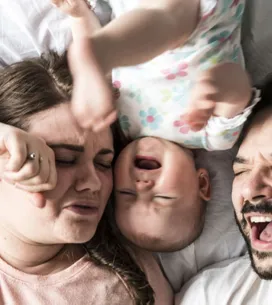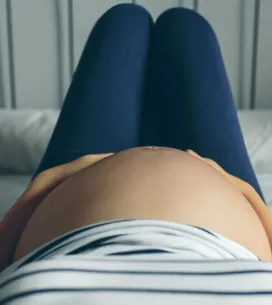Follow our 10 golden rules to sending baby to the land of nod in complete safety.
1. Don’t lay babies on their stomach.
This position was recommended for a long time but it is now accepted that putting babies on their backs reduces the risk of Sudden Infant Death Syndrome or cot death (SIDS). Babies do not have the strength to turn or move if they are placed on their stomach and may suffocate. Babies on their back have their faces free to breathe easily. At around 6 months, babies can sleep however they want to and will start to move in all directions (even if they lie on their stomachs they have the strength to move and turn if they need to).
2. Fit bars on the cot until your baby is 2.
Check that the bars have less than 6cm space between them so that baby's head cannot fit through the bars.
3. Choose a bedstead with wooden slats.
This reduces dust mites and the risk of respiratory allergies.
4. During the first few weeks you may be anxious at the idea of leaving baby to sleep alone. If you want to, place your baby close to your bed in a Moses basket or cradle. It is recommended that baby sleeps in the same room as you for the first six months of life.
5. Baby's mattress should be firm and fit the bedstead perfectly. A mattress that is too small will leave a space baby could fall into. Never use second hand mattresses.
6. Don't put pillows, duvets or cot bumpers in baby’s cot! Babies can easily suffocate in pillows or bury themselves and not be able to get free. There is also the potential to overheat.
7. Fit padding on the bars of baby's cot to provide comfort for your baby (some little ones find it comforting to sleep in contact with something). Wash these regularly as babies tend to sweat a lot from the head.
8. Adjust sleeping equipment to your baby’s growth. When baby is very small and doesn't move much, a Moses basket is ideal (for the first two months). It will cover your baby well and allow you to transport your baby easily without waking him or her. You can use a swaddle blanket during the first 3 months, which is a good option as baby will feel in utero and the balnket puts slight pressure on the stomach (this has a relaxing effect). A baby sleeping bag can be an ideal solution as it covers baby where required without posing any risk.
9. The temperature in the room should be equal to or less than 19 degrees Celsius. Hang up a thermometer to check. If it is too hot, baby’s body temperature increases and this can be harmful.
10. Do not smoke anywhere in the house. Passive smoking is very harmful to a newborn’s health and respiratory problems tend to get worse at night. If you are smoking, change your clothes and wash your hands before going anywhere near your baby.














